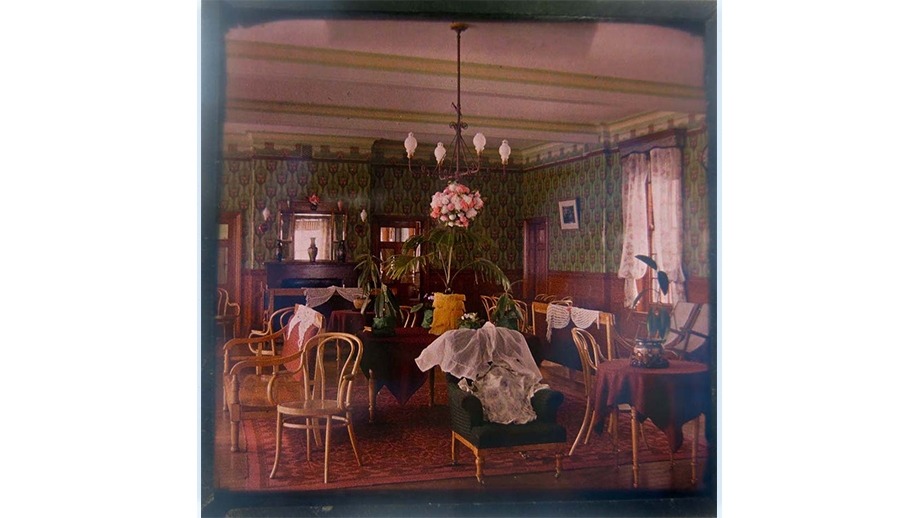An Edwardian dinning room in autochrome - Discussed by Lorenzo Iozzi, Senior Collection Manager of Images for History and Technology, Museums Victoria

An Edwardian dinning room in autochrome - Discussed by Lorenzo Iozzi, Senior Collection Manager of Images for History and Technology, Museums Victoria
My favourite lantern slide is an autochrome taken around 1925. It is an image of a humble sitting room in an Edwardian home. I love it because it is a celebration of light and as such, a celebration of life. The room is bursting with colour. And what colour! Deep reds, greens, blues, yellows and mauves. This is no accidental combination of colour. Autochromes were created by the additive colour process, whereby the combination of two primary colours produced a primary secondary colour. It was, therefore, a pure process, unlike the subtractive colour process in photography at the time which relied on filtering out light bands to ‘leave behind’ the remnant or unfiltered colour. For this reason, the resultant image in an autochrome was considered, quite rightly, to have some of the attributes associated with oil painting.
This is certainly a quality of our lantern slide of the room. In our image an invisible light source from the left castes dark shadows across the rug on the floor which contrast strongly with the bright daylight framed by the window on the opposite side of the room. The mirror, too, on the mantel piece, is reflecting light coming from outside, from the end of the room where the photographer stands to take the picture. The whiteness of the lacework drapery over the furniture accentuates the brilliance of the light. Colour explodes all around. The deliberate placement of the furniture, the flower arrangements and the art deco wallpaper contribute to the warmth and vibrancy of the room. We are all invited to enter and enjoy, surely! Imagine the same photograph in black and white. It would have a totally different mood.
Our image is full of mystery. There are no people in it but you almost expect someone to open the door and come inside. The image is imbued with that much life. A measure of this is that you just want to keep looking at it. Why was a transparency of an ordinary, empty sitting room produced in the first place and for which audience? The simple desire to capture and experience the beauty of the day itself, was certainly in the photographer’s mind. This makes our image timeless. There is no story to go with our image - that we know of - and there doesn’t have to be one. Its mystery invites us to create our narrative - and many narratives - within this room, if we wish. Every time I look at this lantern slide, I create a new story around it, or rather, I keep adding to it.
*****